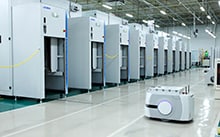Hitachi's work of accelerating Social Innovation through co-creation has already begun, ahead of establishment of the new Kyōsō Centre (collaborative creation centre) planned for the Western Sydney Aerotropolis.
As one of the biggest and most ambitious city build projects in Australian history, the Western Sydney Aerotropolis is an opportunity to create a sustainable, smart city from scratch, complete with a 24/7 global freight and logistics network.
Looking to streamline the movement of Australian produce from the farm gate to port through a digital ecosystem, the Western Parkland City Authority (WPCA) sought the help of foundation partner Hitachi and Sydney-based data engineering firm BizCubed.
Together with the WPCA and BizCubed, Hitachi is co-creating innovative pathways that bridge the gap between world-class Australian farmers and their international consumers.
Video: Creative collaboration between Hitachi and Western Parkland City Authority (WPCA) - streamline the movement of Australian produce from the farm gate to port through a digital ecosystem
With Sydney’s population predicted to rise 60% by 2050, all three tiers of government are making a coordinated investment in transforming the Western Parkland City into a highly connected, innovative economic powerhouse.
Set to open in 2026, the 24/7 Western Sydney Airport will connect NSW producers to more than 50% of the world’s population within a 10-hour flight. New opportunities for innovation are set to boost the agricultural industry in the area, which could be vital to the National Farmers’ Federation reaching its ambitious goal of growing the value of the sector to $100 billion by 2030.
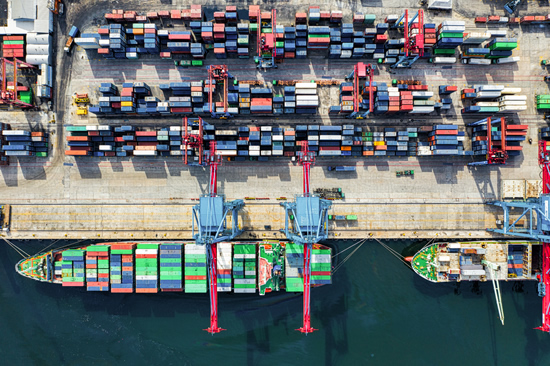
Digital agriculture advances present a chance to provide consumers more information about where their food is coming from and the effect of agricultural production on the environment. The ability to provide this information supports an investment in growing a market for clean and green credentials.
A number of recent Australian Government initiatives align with the objective to digitise agricultural trade, including: the Modernising Agricultural Trade program, the Agri-Business Expansion Initiative and the Simplified Trade System. The collection of digital data along the production cycle could also support the government’s goal to halve the nation’s food waste by 2030.
Meanwhile, an Australian-led UN project directed at streamlining and facilitating trade through a trusted channel for government-to-government communication, could enable a fully digital cross-border supply chain.
These complementary projects and trends provide an opportunity for collaborative Social Innovation from Hitachi and BizCubed, to leverage the greenfield environment of the Western Sydney Aerotropolis and prove the possibility of a completely digital supply chain.
The legacy of paper-based systems sees global trade slowed down by exhaustive processes struggling to respond to volatile market conditions. While some processes have been digitised, this often means a digital PDF of an old paper document. The data in these forms isn’t versatile or transferable.
A fully digital international supply chain system would enable all the verification processes and information that must be verified from country to country to be digitally transferred, tracing each component along the chain in a simple, translatable, accurate and reliable way.
In the midst of a global digital transformation, there are companies all over the world developing digital supply chain capabilities. However, no solution has yet been able to navigate the government-to-government exchange of certification and regulatory data required to facilitate exporting and importing.
The challenge is to design and deliver mechanisms that build trust and transparency in digital information shared across borders, languages and cultures.
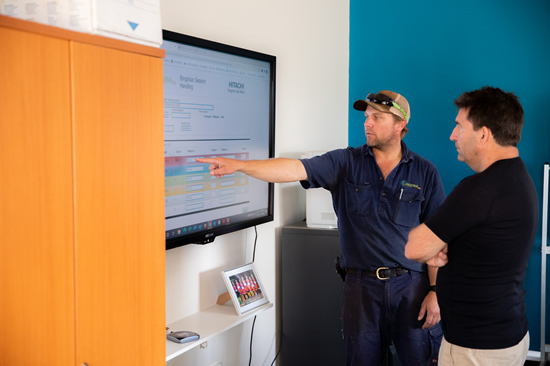
In such a complex project, impacted parties come from across private industry and the public sector, in Australia and internationally.
Australian Government departments and international bodies have a vested interest in the modernisation of trade. Local producers big and small, foundational partners of the Western Sydney Aerotropolis, and overseas trade partners all have something to benefit from the digital supply chain project.
The challenge for Hitachi then lies in working smoothly and securely together with stakeholders in a way that manages all parties’ expectations and objectives, and allocates and shares the risks of such a sensitive endeavour.
The proof-of-concept project to validate a fully digital supply chain is also a proof-of-concept challenge for Hitachi’s co-creation model to facilitate the collaboration between people, government and industry required to get the job done.
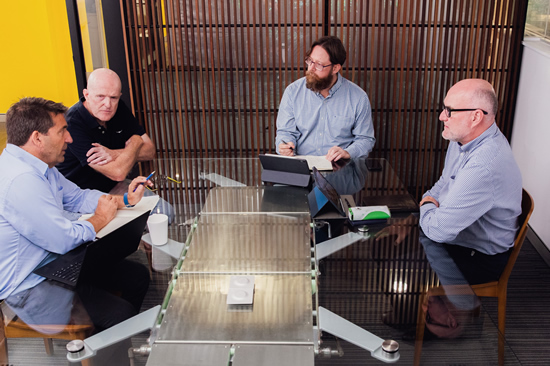
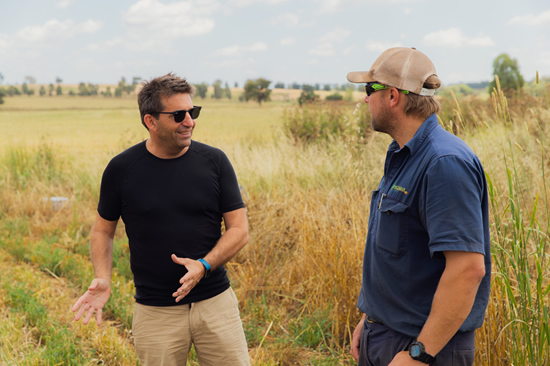
Leveraging the Lumada platform (powered by BizCubed), Hitachi is building an ecosystem of partners to co-innovate and co-develop utilising an adaptive, open-source platform. This platform acts as a central point of integration for turning data into insights.
Working together, the WPCA and Hitachi established the vision and scope of the project, engaging potential stakeholders across the agriculture industry and different levels of government to determine the expectations, feasibility and possible applications of the project across different sectors.
While the diversity of such a big group of stakeholders poses challenges, it also creates opportunities that make this project possible. Hitachi’s private sector mindset, global footprint and technical experience automating warehouses and supply chains, together with the innovative spark of small, agile tech companies, complements the regulatory knowledge, influence and international diplomacy of different levels of government.
Hitachi’s digital architecture and approach to collaborative innovation is able to bring together the contributions of diverse stakeholders, interpret this data, and output results. Throughout this project, Hitachi and BizCubed are demonstrating how data and information could be presented to best meet the needs of different users.
Together, Lumada and DEEP form an advanced digital solution for turning data from many different formats, interfaces and languages into insights. Linking this platform with the Inter-Government Ledger opportunity — which will allow governments to interchange information in a “shared nothing” architecture — will enable the realisation of a fully digital supply chain.
The ability to transport fresh Australian produce from farm gate through a digitised airport and international protocols to the customer’s plate, anywhere in the world within 36 hours, is just the beginning. A cohesive digital system for the entire production cycle provides an efficiency and speed of movement of secure information that was not possible before.
For a farmer, leveraging comprehensive data can increase productivity, shorten the production cycle, build resilience in times like drought and flood, and boost return on investment.
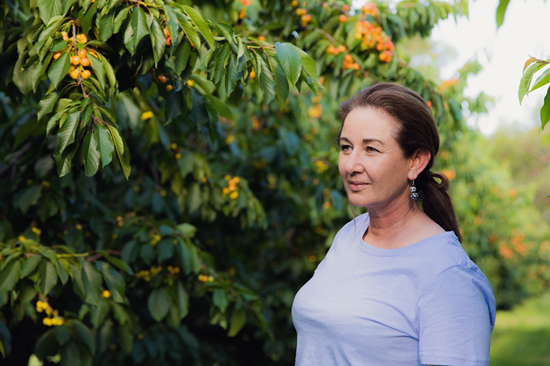
Embedding data and technology also allows for a clearer understanding of potential weaknesses in the production cycle. By identifying and fixing points of loss along the supply chain, while better matching supply to demand, we can dramatically reduce food wastage and increase sustainability with benefits to producers, consumers and the environment.
A digital supply chain has the potential to disrupt current business models and transform the way primary production systems work. An efficient, cohesive digitised system would support business models that give producers an opportunity to better articulate the value of their products. Meanwhile, producers could once again have a communicative relationship with their consumers, who could in turn make more informed purchasing decisions.
Proving the Lumada and DEEP application in digital agriculture offers inspiration for the future of innovation, co-creation and international trade across Australia and the APAC region.
The effective collaboration between diverse partners in the WPCA digital supply chain project is demonstrating what can be done through Hitachi’s co-creation approach.
By linking governments, international bodies, large industry players and small companies through a collaborative model, we can create an ecosystem for innovation.
The digital supply chain project — with its potential influence on growth within the Australian agricultural sector — demonstrates the capabilities of Hitachi’s co-creation model and planned Kyōsō Centre, which will contribute to the improvement of the social, environmental and economic values in Western Sydney and beyond.
Article: The Australian - Farmers to get digital turbo boost
Release Date: February 2021
Solutions By: Hitachi Australia






